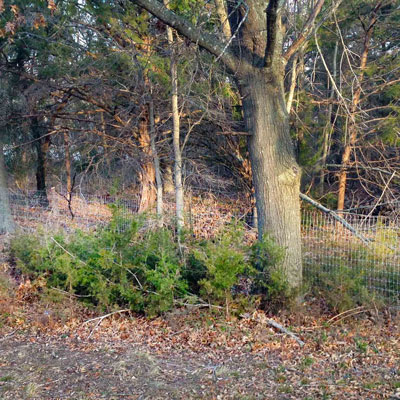Question of the Week: October 27, 2016
“Neil, I have several plants I need to transplant. When should that be done?”

Photo: These native eastern redcedar seedlings will be used as tall, screening plants in the Sperry landscape. But how and when should they be dug and relocated?
I’ll begin the answer by distinguishing between simply “planting” and “transplanting.”
Planting can be done at almost any time of the year, because it typically involves no loss of roots. The new plants go into the ground with their root systems intact.
Transplanting involves actually digging a plant, usually with some loss of roots in the process, and moving it to a new location. It’s what you would do, for example, if you wanted to save a tree or shrub from an expansion of your house.
Transplanting will be our subject from here on, because it’s the source of most of the questions. Here are the guidelines.
• Trees and shrubs must be transplanted while they are dormant. That’s in the winter, after they’ve been subjected to at least one hard freeze (temperatures of 30F or below). If you’re in a part of Texas where freezing weather seldom happens, come as close as you can.
• Vines and groundcovers are rarely transplanted. It’s generally easier to start with new, vigorous nursery stock. But if you wanted to move a historic old vine, for example, that, too, would be done during the winter.
• Perennials are moved at seasons opposite of their blooming seasons. If they flower in the fall, you transplant them in the spring, and if they bloom in spring, they’re transplanted in fall.
Tips for transplanting trees, shrubs…
We’ll talk about this more when the actual moving season comes, but you can help prepare woody plants for a mid-winter relocation by doing “root pruning” in September or October. Use a sharpshooter spade to cut a slit around the plant approximately where the soil ball will be when it’s dug. Don’t try to lift the plant at all at this time. Just prune the lateral roots to encourage more roots to form in the soil ball.
And finally, just to plant this seed of knowledge: when you dig and move an established plant, you’re going to lose a certain percentage of its roots as we mentioned. You must compensate for that by thinning out the top growth proportionately. Don’t do that pruning now. (It would stimulate new growth.) But be prepared to do it the day of the transplanting.
